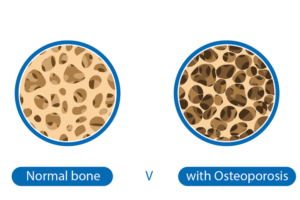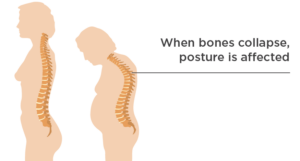Incontinence – The Facts
Most people are too embarrassed to discuss this topic with anyone. There are treatments to help with these issues, so please do not be embarrassed just contact us, as it is rarely too late for a person to get help.
Who can it affect?
Incontinence can affect males and females of all age groups. It can affect those with and without bone loss. Those affected can have problems with leakage of urine, wind or stool.
The different types of leakage
Stress incontinence is leakage of urine with coughing and sneezing.
Urge incontinence is leakage of urine with the urge to empty your bladder.
Mixed incontinence is leakage of urine with coughing and sneezing and the urge to empty your bladder.
Anal incontinence is leakage of wind or stool.
Effects of untreated incontinence
Untreated incontinence can affect a person’s quality of life, confidence, and can place a person at risk of breaking bones (Fractures), if they fall rushing to the bathroom or slip and fall from having an accident.
Incontinence in Men
Men can develop stress and urge incontinence as they age, with issues with urinary frequency and urgency known as an overactive bladder, causing them to have to get up several times during the night to empty their bladder. It can also occur after prostate cancer surgery or other pelvic or bowel surgery. Prostatitis and Cystitis can also cause incontinence. Men can have pelvic pain and erectile dysfunction and constipation when urinary incontinence is an issue. Young men can suffer from bed wetting.
Incontinence in Women
Women can have incontinence in teenage years (giggle incontinence), during pregnancy, after the menopause or after a surgery. Women can have an overactive bladder and/or Pelvic organ prolapse which is when the womb, bladder or bowel comes down into the pelvic floor area. Women can also have sexual dysfunction and pelvic pain along with incontinence.
Incontinence and the link with Osteoporosis and/or Osteopenia
When vertebral fractures occur (Broken bones in your back), your ribs can drop down, as there is not enough bone in your back to support them. Your stomach contents can then be pushed forward, which causes a pot belly to develop, and this can place more pressure on your bladder area.

What is Osteoporosis?
Osteoporosis is a disease that affects the inside of your bones, making them fragile. The images above show how Osteoporosis causes large holes to develop in the inside of your bones, which is why they break easily. Broken bones are also known as fractures. Example: You have been told that you have fractured vertebrae/ collapsed vertebrae/crushed vertebrae, which all mean you have broken bones in your back.
What is Osteopenia?
Osteopenia is the early stages of Osteoporosis. Research shows that most broken bones (fractures) occur in the moderate to marked Osteopenia range, which is a DXA scan T score result of -1.5 to -2.49. FYI: A person can be diagnosed with Osteopenia in their hips and Osteoporosis in their back or the reverse.
Are Osteoporosis and Osteopenia treatable?
Yes, it is very rare when a person cannot improve their bones. We know of 90-year-olds who have improved their bone health.
Who is at risk of developing Osteoporosis?
Anyone can develop Osteoporosis, as it affects women and men of all age groups and can even affect children. You will not feel the insides of your bones getting thinner, which is why everyone should check to see if they have risk factors for bone loss. Women over 65 are the highest risk group affected as they will have gone through the menopause, which is when a significant amount of bone can be lost. 90% of fractured hips (broken hips) are due to Osteoporosis and 7 out of 10 hip fractures happen to women.
What are the risk factors for losing bone?
There are approximately 200 causes of bone loss. Some causes are secondary effects from other diseases, treatments for other diseases and others are lifestyle choices. The following are some of the many risk factors, the Menopause, Family history especially of a broken hip, Radiation, chemotherapy and some treatments for breast and prostate cancer. Rheumatoid arthritis, Coeliac disease/Gluten sensitivity and Low levels of sex hormones in females and males. Anorexia/Bulimia, over exercising, Lack of weight bearing exercise, many medications such as protein pump inhibitors, others that contain cortisone such as steroid asthmatic inhalers, some anti-depressants and some water pills, Low calcium and/or Vitamin d levels, Physiological or psychological stress, smoking and excess alcohol.
The signs and symptoms of possible undiagnosed Osteoporosis
